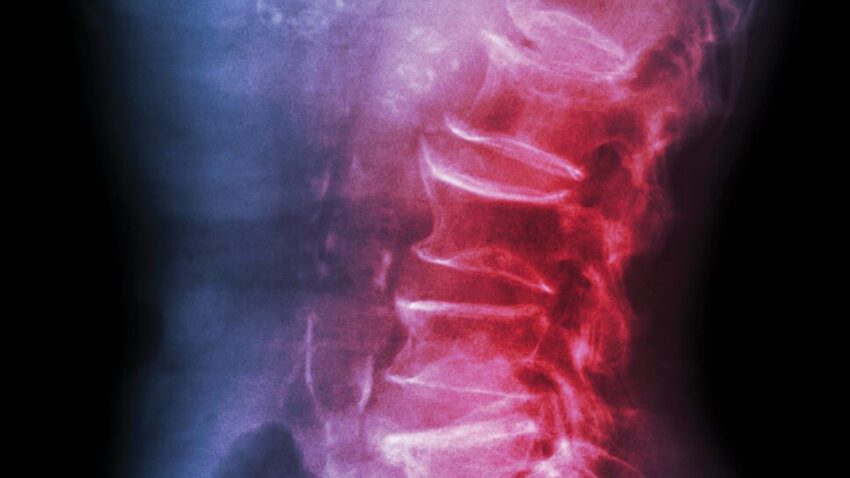Osteoporosis is a disease of the bone characterized by a loss of density, mass, and strength that is often a silent disease until fractures occur. Osteoporosis can lead to severe disability since it weakens the skeleton to the point where simple activities of daily living may result in catastrophic fractures. Osteoporosis becomes more common in the sixth decade of life but can occur at any age, particularly in those with chronic diseases. Perhaps because patients with osteoporosis remain asymptomatic for many years causing it to be underdiagnosed, the treatment of osteoporosis has lagged behind other disease treatments and has been insufficient except when treating the resultant fractures with surgery.
The Good News
Fortunately, over the past two decades there has been great progress with numerous new medications developed that have dramatically improved the ability of health care professionals to successfully treat osteoporosis, resulting in a decreased chance of suffering an osteoporotic bone fracture. Osteoporosis may affect all skeletal regions, progressively weakening the bone’s strength, resulting in fractures of the spine, hips, shoulders and forearms. Once osteoporosis has been diagnosed, these medications, when combined with Vitamin D3, calcium, lifestyle changes, exercise and diet can not only decrease the loss of bone from the skeleton, but certain medications increase bone strength and prevent fractures.
This article will provide detailed information on the various classes of medications for the treatment of osteoporosis, medication names (generic and brand names), how they are administered, the recommended length of treatment, possible side effects, and their expected effect on bone health. We are fortunate in this day and age to have several to discuss.
Osteoporosis Medications
There are five major types of medications available for the treatment of osteoporosis found in the summary table of medications for osteoporosis. These medications work in two basic ways, by (1) decreasing the progressive loss of bone and slowing the loss of the skeleton’s integrity (referred to as catabolic drugs or inhibitors of bone resorption) or (2) building bone mass (referred to as anabolic drugs or stimulators of bone formation) resulting in an improvement of the skeletal strength.
These medications are administered in a variety of methods including by mouth, intravenously and by subcutaneous injection, and dosage schedules may be daily, weekly, monthly, or biannually depending on the medication. These drugs are all generally well tolerated and have acceptable side effects that are manageable but do require treatment by a health care provider trained in their administration and adherence to a rigorous dosage schedule.
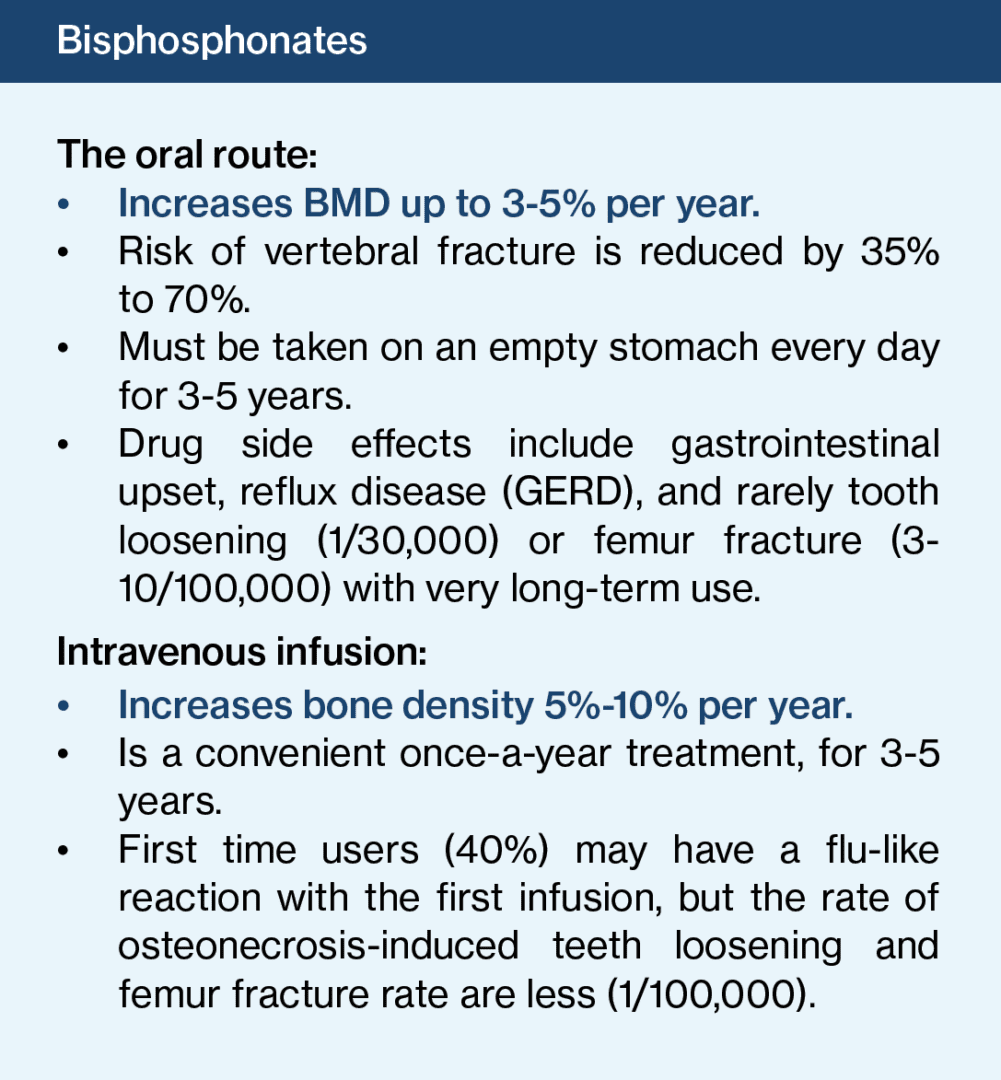
Bisphosphonates are the largest class containing several medications, including alendronate (Fosamax™) released in 1995 and risedronate (Actonel™) released in 2000, and are medications that slow the loss of bone mass (catabolic). They are often the initial, front-line medications to treat osteoporosis by health care providers. The two pathways of administration are by mouth (orally) and intravenous infusion.
Raloxifene (Evista™) was released for use in 1997 and is a selective estrogen receptor modulator (SERM) that can treat postmenopausal women with osteoporosis to decrease the risk of fractures and reduce the risk of invasive breast cancer. In postmenopausal women with osteoporosis, bone resorption outpaces bone production leading to a loss of bone mass due to the decline in estrogen. This medication ameliorates this process, thereby preserving bone density.


Denosumab (Prolia™), released in 2010, is a synthetically produced antibody that specifically neutralizes the cells in bone that resorb and remodel it (inhibits osteoclast formation). Consequently, this allows for a net increase in bone density, preserving bone strength and integrity, while decreasing the chance of skeletal osteoporotic fractures.
Parathyroid analogs provide potent treatment of severe osteoporosis, just as a person’s natural parathyroid hormone (PTH) can improve bone density. PTH analogs include teriparatide (Forteo™) released in 2002 and abaloparatide (Tymlos™) released in 2017. These anabolic medications have been shown to dramatically increase bone density by stimulating bone formation.

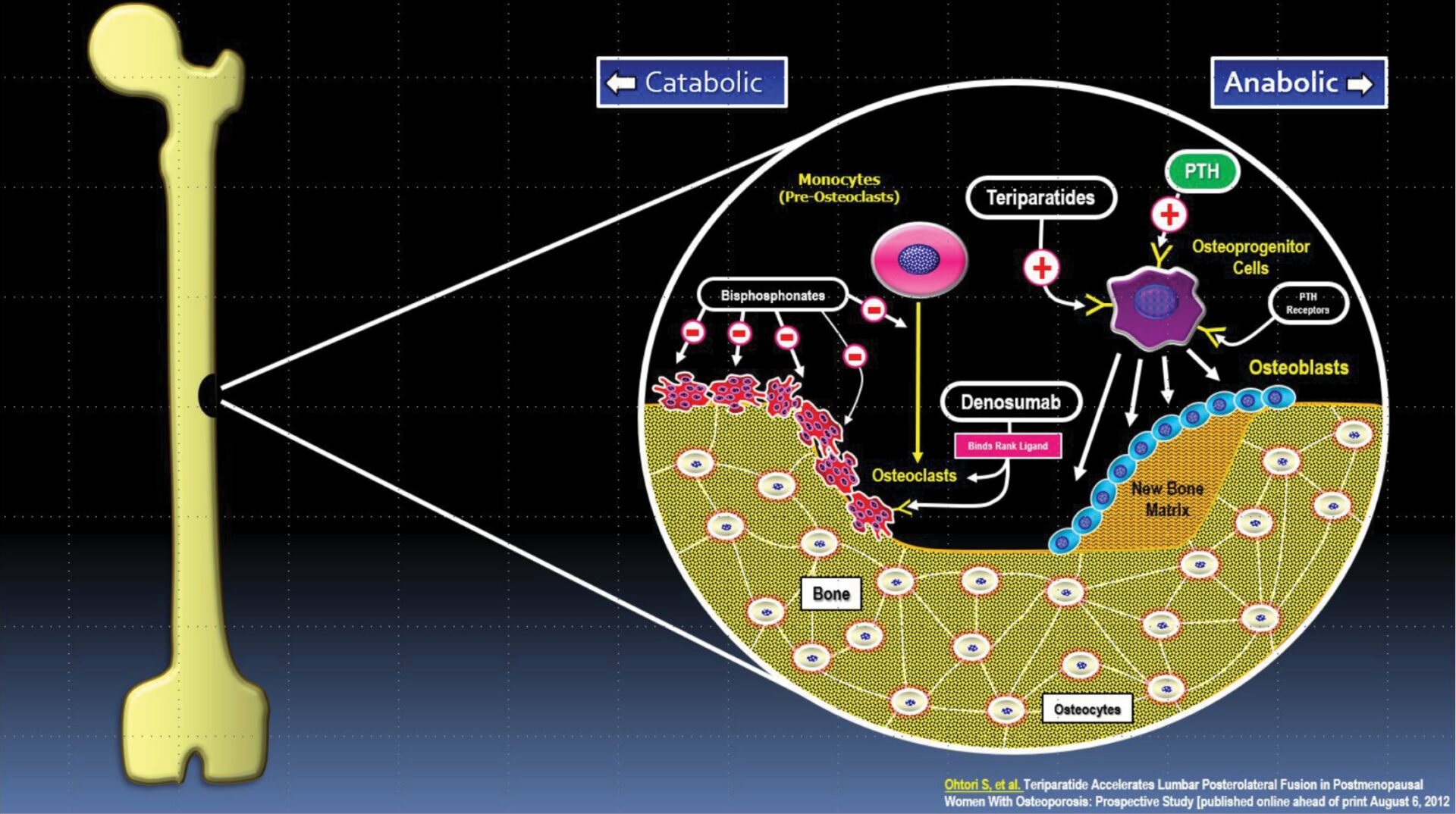

Romosozumab (Evenity™) was released in 2019 and is the newest medication to be developed for the treatment of severe osteoporosis and is another synthetically produced monoclonal antibody that neutralizes a specific bone pathway protein (Sclerostin). This novel approach to osteoporosis treatment allows for the body to produce more bone building cells (anabolic), resulting in a rapid increase in bone density.
Osteoporosis is a serious medical problem that can be life threatening. Depending on the severity of the osteoporosis, these medications now offer patients effective treatment of the disease when combined with a directed bone health program and will stabilize or improve poor bone, potentially preventing catastrophic skeletal fractures.

Although there are few studies that directly compare the effectiveness of these drugs to one another, there are enough studies to support their use not only to prevent fractures but also to pre-treat patients that have planned orthopedic procedures to strengthen the bone and prevent frequently encountered severe complications. This is particularly important when preparing for spine surgery. The evidence is compelling enough that the College of Neurological Surgeons (CNS) 2021 Guidelines found that the following predict an increased risk of osteoporosis-related adverse events after spine surgery:
- preoperative dual-energy X-ray absorptiometry scan (DXA) with T-score < -2.5
- computed tomography scan with Hounsfield units < 97.9
- serum Vitamin D3 level <20 ng/mL
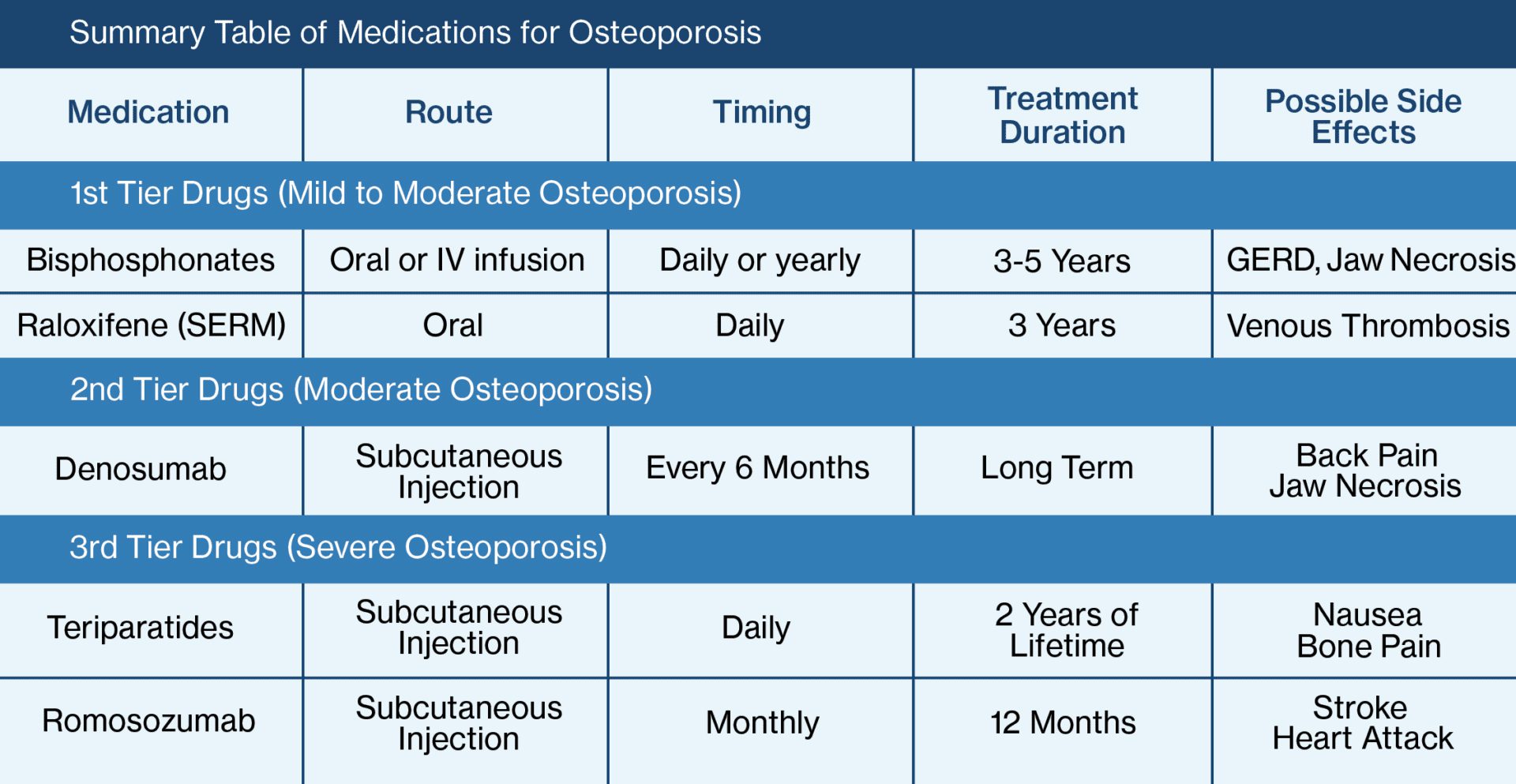
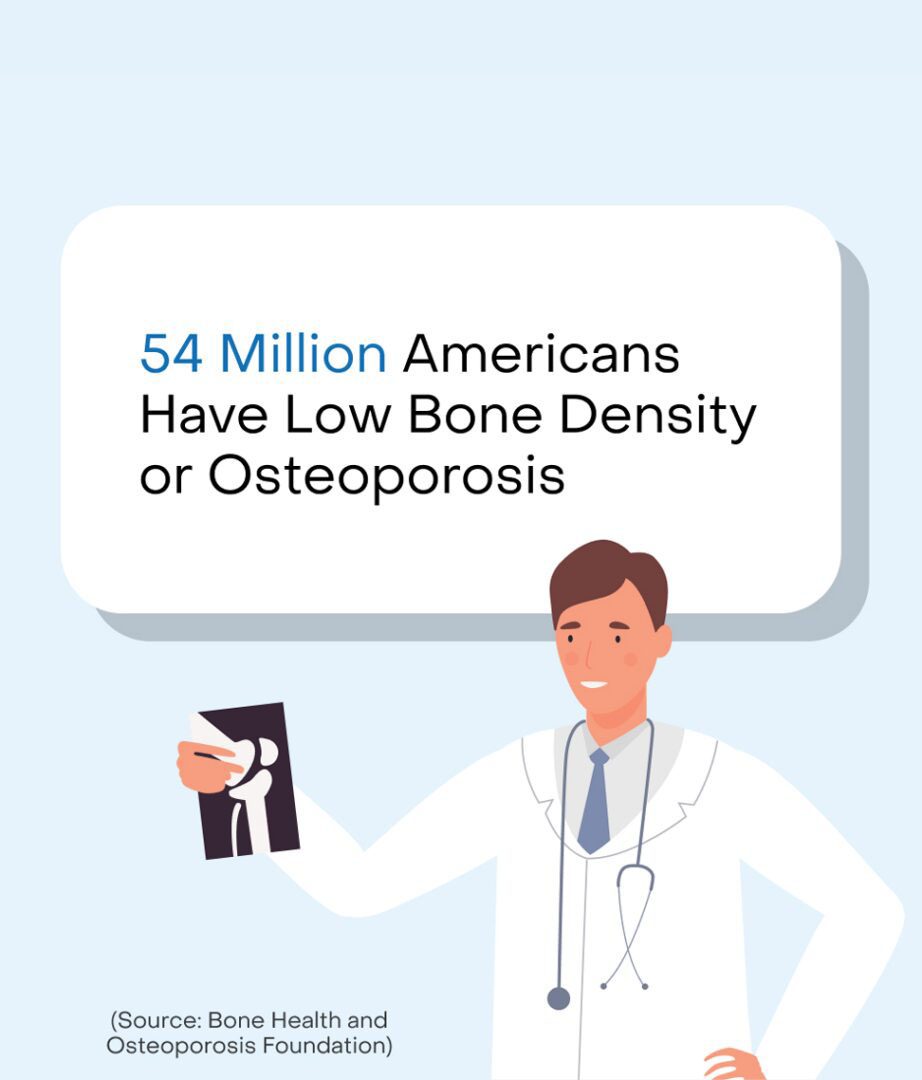
The task force also concluded that preoperative osteoporosis treatment with teriparatide increases bone density, induces earlier and more robust fusion, and may improve select patient outcomes. Spine care specialists not only recommend identification and robust treatment of all patients with osteoporosis but are also strongly recommending those undergoing elective surgery be pretreated.
Perhaps the most important recommendation our experts can make is that individuals be their own advocates and ask their health care providers to evaluate them for osteoporosis and initiate an effective therapeutic treatment plan. Those with documented osteoporosis undergoing elective spine surgery should also request that their surgeon arrange for pre-treatment with medications since the guidelines found earlier and more robust fusions and potentially improved outcomes in patients undergoing treatment for osteoporosis.
In summary, there are many medications these days to treat osteoporosis, which is initially a silent disease of the bone and that is often underdiagnosed and untreated. Find out your bone status by requesting a bone evaluation with your health care provider today!
